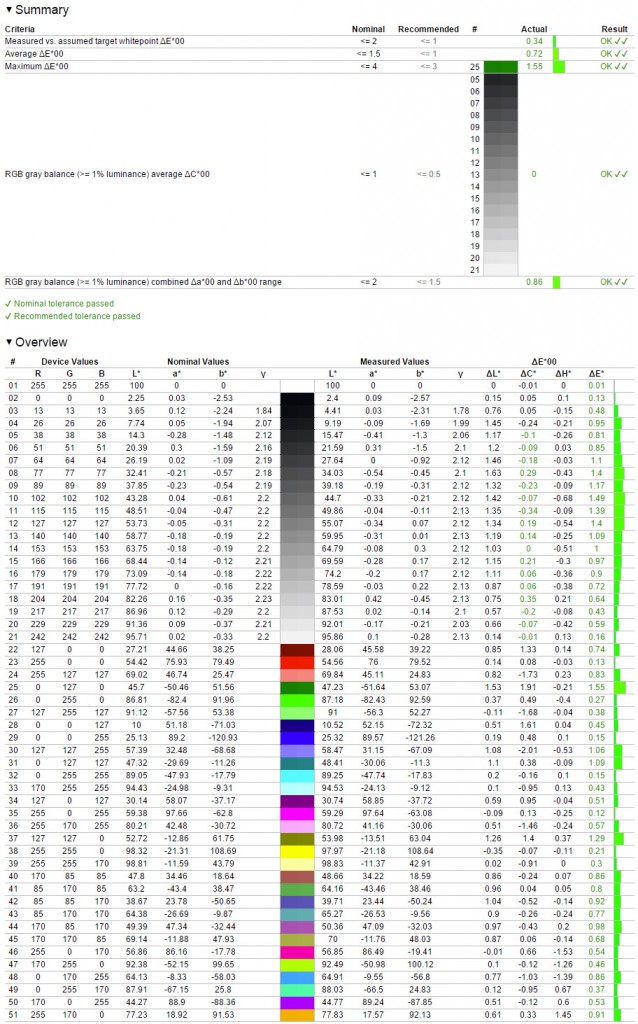The MG278Q’s 27” WQHD screen sits right in the sweet spot for gaming—its 2560×1440 resolution delivers sharp details without requiring multiple high-end graphics cards to maintain fluid frame rates. The gaming experience is even smoother thanks to the 144Hz peak refresh rate, which can be perfectly synchronized with compatible Radeon graphics cards using AMD FreeSync technology. On top of that, you get a fully adjustable stand, multiple digital inputs, an awesome OSD navigation joystick, and a multitude of gamer-friendly overlays and picture modes. That’s a nice assortment of features considering the $510 asking price ($690 in Canada).
The only potential sticking point is the TN panel. The underlying twisted-nematic technology gets a lot of hate in certain circles. Some of the criticisms are fair, since aspects of TN tech are inferior to IPS alternatives. But a lot of the complaints are overblown, usually because they’re based on lousy examples. TN panels have improved tremendously over the years, making impressions of older models less relevant. The market is also dominated by cheap implementations that cut corners to reduce costs. Those low-end TN displays are a far cry from what’s possible if you set out to build a really good one that minimizes the technology’s weaknesses while maximizing its strengths.
Poor color reproduction is one of the biggest knocks against TN displays. In some cases, it’s a completely legitimate complaint. The colors on a lot of TN monitors simply don’t look very good. But the MG279Q’s TN panel is a cut above the rest. It produces over 16 million colors, enough to fully cover the sRGB gamut.
The accuracy of those colors won’t necessarily be perfect out of the box. Unlike with our professional-grade ProArt monitors, which are calibrated at the factory, you’re on your own with the MG278Q. That said, impressive results can be achieved with an off-the-shelf colorimeter and free software.
Color accuracy is quantified with a metric called ∆E, which describes the difference between the colors produced by a display and their ideal values. The latest C1E 2000 formula even accounts for the fact that our eyes have different sensitivities depending on where colors sit on the spectrum. The math is complicated, but the basics are simple: lower is better, and values under two are very good. Our top-of-the-line ProArt PA328Q is guaranteed to deliver ∆E ≤ 2.
According to our X-Rite i1DisplayPro colorimeter and dispcalGUI software, the MG278Q sample we pulled had a maximum ∆E of 7.12 with an average of 2.7 when configured in sRGB mode. Calibration improved the accuracy substantially, reducing the peak ∆E to 1.55 and the average to just 0.72! Here’s the full report from dispcalGUI:
There’s some natural variance from panel to panel, so don’t expect every MG278Q to match our pre- and post-calibration results exactly. That said, you should be able to get into the same ballpark with just a little bit of work. And I do mean a little. Although dispcalGUI’s full profiling and calibration routine takes over four hours to complete, it runs unattended, so you can set it up, walk away, and let the software do all the work.
Viewing angles are the other major point of contention. The fact is that TN panels don’t look as good from off-center angles as their IPS counterparts. Although the MG278Q can’t escape the technological constraints responsible for this reality, its narrower viewing angles aren’t necessarily problematic for desktop use. Unlike the displays on handheld devices like smartphones and tablets, monitors are typically viewed straight-on. Indeed, the MG278Q’s adjustable height, tilt, and swivel range lets you easily achieve the perfect position in any environment—and quickly adjust it for different users.
Even when viewed from an angle, the MG278Q looks better than you’d think given the extreme color shift visible on lesser TN displays. The following images illustrate the picture quality at different angles; click the buttons below to switch between the different views.

Color shift is minimal up to 20° from the side. Beyond that, the far end of the screen takes on a visibly duller tint that spreads toward the center as the angle becomes more extreme. The thing is, the screen also takes on an increasingly trapezoidal shape as the angle increases. That shift would compromise the viewing experience even if the picture looked identical. Unless several people are huddled around the screen at the same time, there’s no reason for it to be viewed at such extreme angles.
Viewing angles are narrower in the vertical plane, as evidenced by the darker picture visible with the display tilted back 10°. That’s an inescapable reality of TN technology, but again, there’s little reason to view the screen this way in a desktop environment. You have to slouch a fair bit to notice a difference, and even then, you can always adjust the screen’s position to compensate.
While TN displays do have inherent weaknesses, they also have advantages in some areas. They’ve supported ultra-high refresh rates for years, where the IPS camp is only just catching on. Higher refresh rates make in-game visuals look much smoother, provided your graphics card can keep up. They also reduce input lag, which makes games feel more responsive.
TN technology has incredibly quick pixel response times, as well. The MG278Q’s pixels transition in as little as one millisecond, one quarter the time required by the best IPS monitors. This rapid response reduces ghosting, letting you see where your target is instead of the residual glow left over from where it was. The improvement is especially noticeable in fast-paced games with lots of motion. It’s even evident on the desktop, where faster pixels can make text look sharper when quickly scrolling through web sites and documents.
So ignore all the TN hate—the MG278Q’s combination of fast pixel response, high refresh rate, and great picture quality is ideal for gamers, especially those with FreeSync-compatible Radeon graphics cards. If you want a similar TN display based on NVIDIA G-Sync technology, we have the ROG Swift PG278Q.
Of course, we’re mindful of the fact that some people still prefer IPS displays. That’s why we also offer the MG279Q and ROG Swift PG279Q, whose IPS panels boast wider viewing angles and even better colors.


